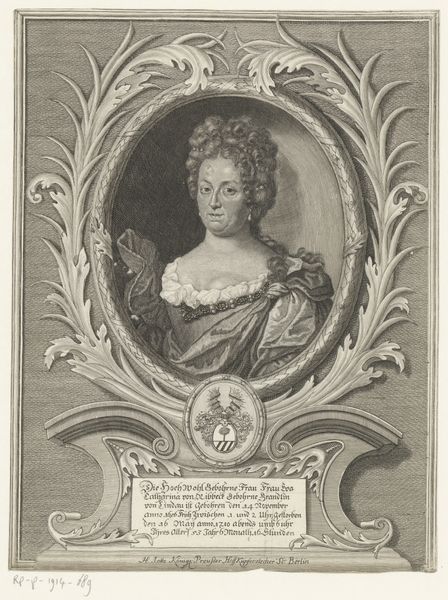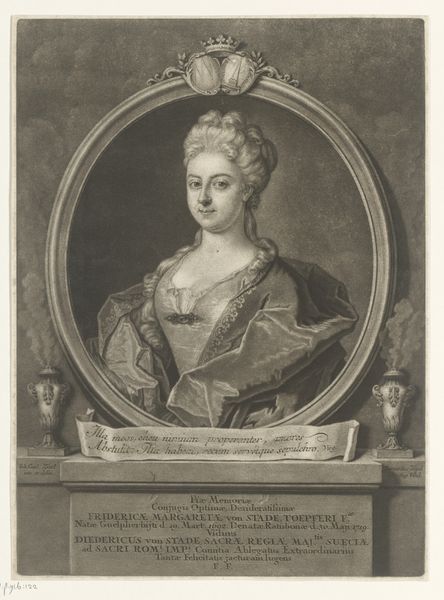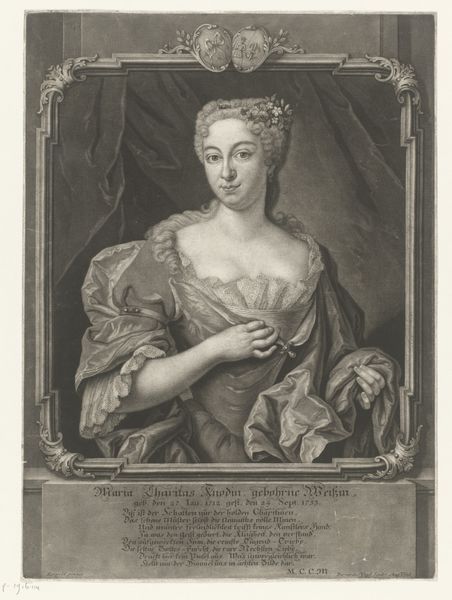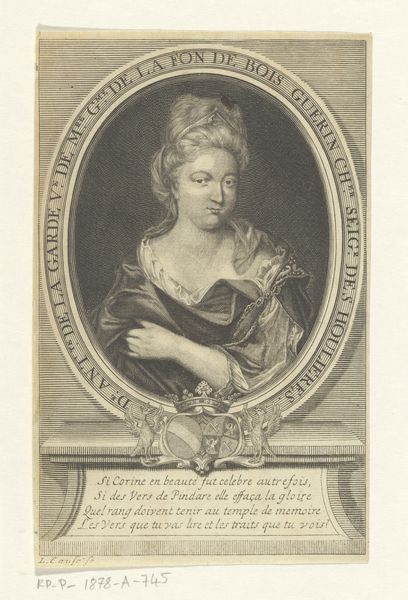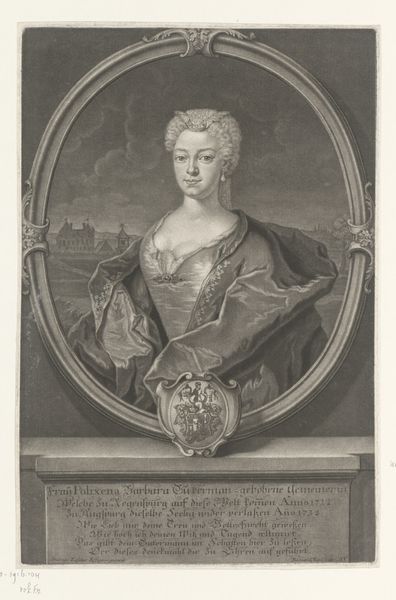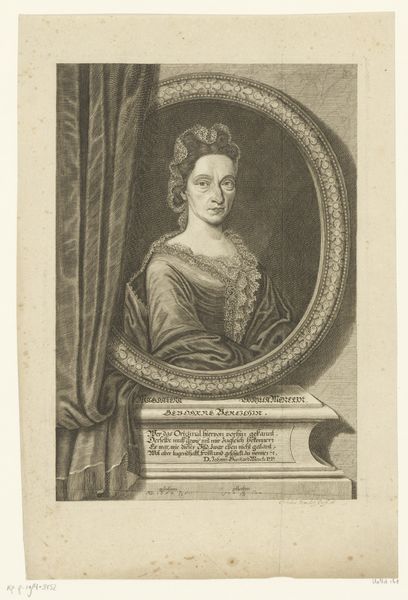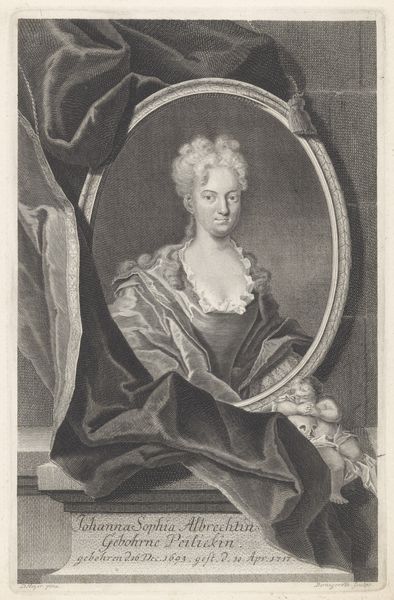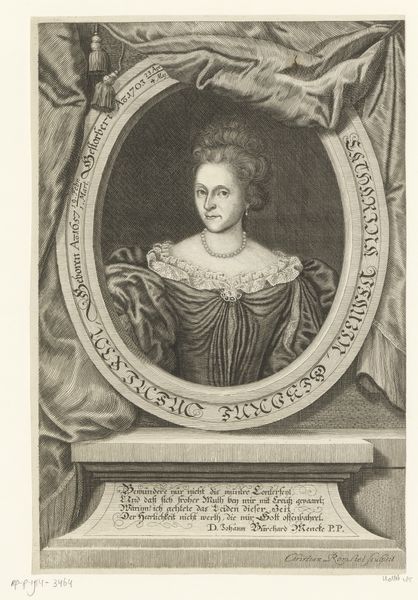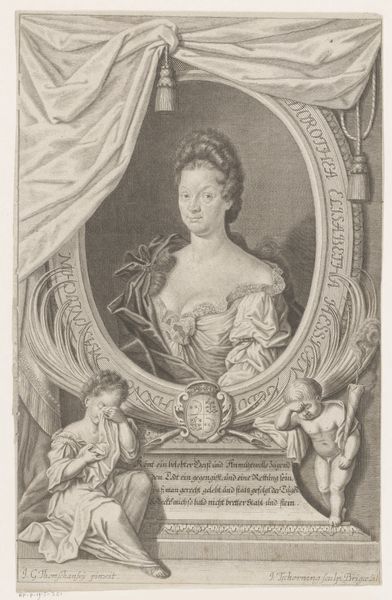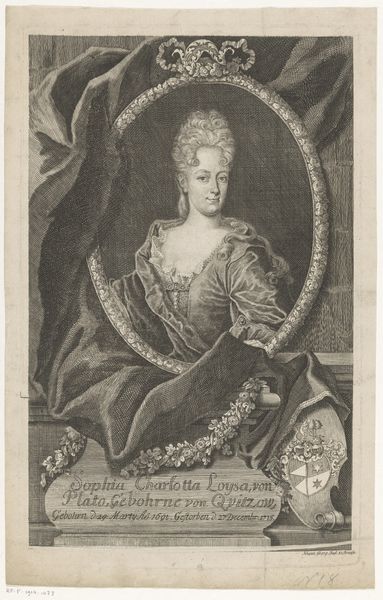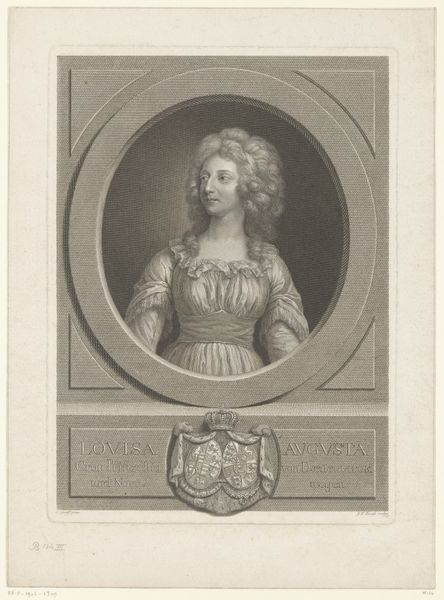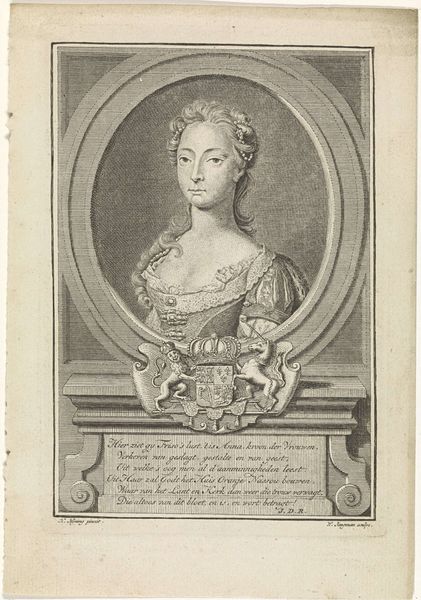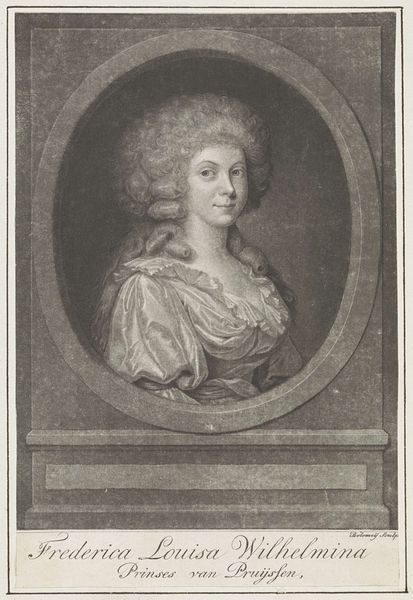
print, engraving
#
portrait
#
baroque
# print
#
old engraving style
#
portrait drawing
#
history-painting
#
engraving
Dimensions: height 321 mm, width 223 mm
Copyright: Rijks Museum: Open Domain
Curator: Before us is "Portret van Eberhardina von Görne," a baroque engraving created in 1704 by Jakob Wilhelm Heckenauer. Editor: The rendering of the face seems so precise, but something about the ornamentation of the oval frame—those repetitive flourishes—strikes me as unexpectedly lifeless, given the skill evident elsewhere. Curator: Precisely. Let's delve into that contrast. The engraving relies on established visual conventions for portraiture. Notice the meticulously detailed rendering of Eberhardina's features and the fashionable hairstyle, clearly designed to project an image of elevated status and refined beauty. The formal elements reflect the subject's social standing. Editor: Absolutely, but consider the sheer labor invested in this piece. The fine lines of the engraving suggest painstaking work with the burin. Think about the skilled craftsmanship and the economic investment required for materials and artist’s time to produce this print. And yet, ultimately, its success hinges on reproducing a very specific image of elite womanhood, shaped by patriarchal social forces. Curator: The formal constraints certainly contribute to a controlled effect. The oval format and surrounding decorative elements work together to frame and contain Eberhardina. Semiotically, this framing enhances the notion of her as an object of admiration, literally setting her apart. But one could argue that Heckenauer manages to breathe some individuality into a conventional format through his meticulous technique. Editor: I would not dispute that. Still, the production context underscores how even seemingly refined art can participate in social construction. The act of printing itself—the multiplication of her image, facilitated by readily available materials—amplified the reach of elite social narratives. We can view that as both a product and a tool. Curator: Your points effectively tie production to propagation of cultural values. What begins as skilled craft, in the hand of Heckenauer, becomes enmeshed in a greater societal machinery. A visual exercise transforms into social pronouncement. Editor: Which circles us back to the materials—the very ink, paper, and the process used, transforming base substances into instruments of social projection and affirmation. I appreciate, once again, the tensions exposed when looking so carefully at this print today.
Comments
No comments
Be the first to comment and join the conversation on the ultimate creative platform.
